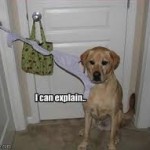Many first novels jump into flashback in the opening chapter. The writer thinks readers will want to know as much about their character as they do. While we do need to know some things (setting, time and POV chief among them), readers are willing to forgo the background (what happened to this character before the story’s beginning) to get action.
Writing Tip for Today: The most important thing about your story opening is for the first few paragraphs to do these things:
• Create sympathy or at least high curiosity for the POV character or main character.
• Give us the general setting and time frame.
• Show the reader at least a hint of the direction we are about to go. The best novels foreshadow the book’s overall theme or premise, even if we don’t know this until much later.
You may have heard the advice against loading flashbacks or back story into your opening. It’s sound advice. What are some other things to remember in back story?
• Be Specific. Be sure you orient your reader in space and time for every new flashback.
• Keep Them Short. Flashbacks are most effective most often when they are short. If you have written more than a few sentences of flashback, be aware that the real time action is frozen.
• Cold Mashed Potatoes Rule. Imagine your character is dining at table, ready to dig into her whipped potatoes. As she lifts a forkful to her lips, her “mind reels back” (please don’t write this!). For every moment the reader is in flashback, the character’s mashed potatoes are in suspended animation, getting cold. By the time the flashback is over, she’s not going to want to eat those cold gloppy potatoes.
• Learn to Weave. The late writing guru Gary Provost counseled writers to use a sensory tag as a way to get in and out of flashback. So instead of cliche (see “her mind reeled back” above), use a natural way, one based upon the five senses. Perhaps the character sees a chipped tea cup, the same kind she remembers her grandma using. That object ties us to both places (the now and the then) so it feels more logical to the reader. At the end of the flashback, the character can use the cup as a means to get back into the real time scene.
• Rule of Three. If you write more than 3 (sentences or paragraphs) of flashback, try to touch base with the real time scene so the reader doesn’t forget what it was.
• Need to Know Basis. Your general rule of thumb in writing flashbacks is that you give only necessary info to the reader on a need to know basis. This will almost always result in little bits fed to the reader instead of big chunks all at once.
• Where’s the Story? If you find yourself drawn more to the back story than real time, maybe you’ve started the story in the wrong place.
• Avoid Flashbacks Within Flashbacks. If you are writing a flashback where a character starts telling about an even earlier time, your readers will get confused very easily. Only the most skilled writer can pull off a double flashback. Don’t give your reader another reason to be confused or stop reading.
• First Chapter Blues. Take a look at your first chapter. Analyze it for flashbacks. If the story is weighted down with back story, that chapter may not be doing its job. Many novelists end up axing that beginning and starting with chapter two or even later.
Ready to take your writing to the next level? e-mail me





I’ve always wondered if referencing or hinting (such as I did with the Mar’ahli and Q) count as flashbacks.
When I read my prologue and it contained Q mentioning the Mar’ahli warriors, does that count or is it just referencing since he said/thought/remembered he was one once?
Good advice, Linda. I’ve been enjoying your posts for days, but I’m tardy about expressing my appreciation. Thank you!